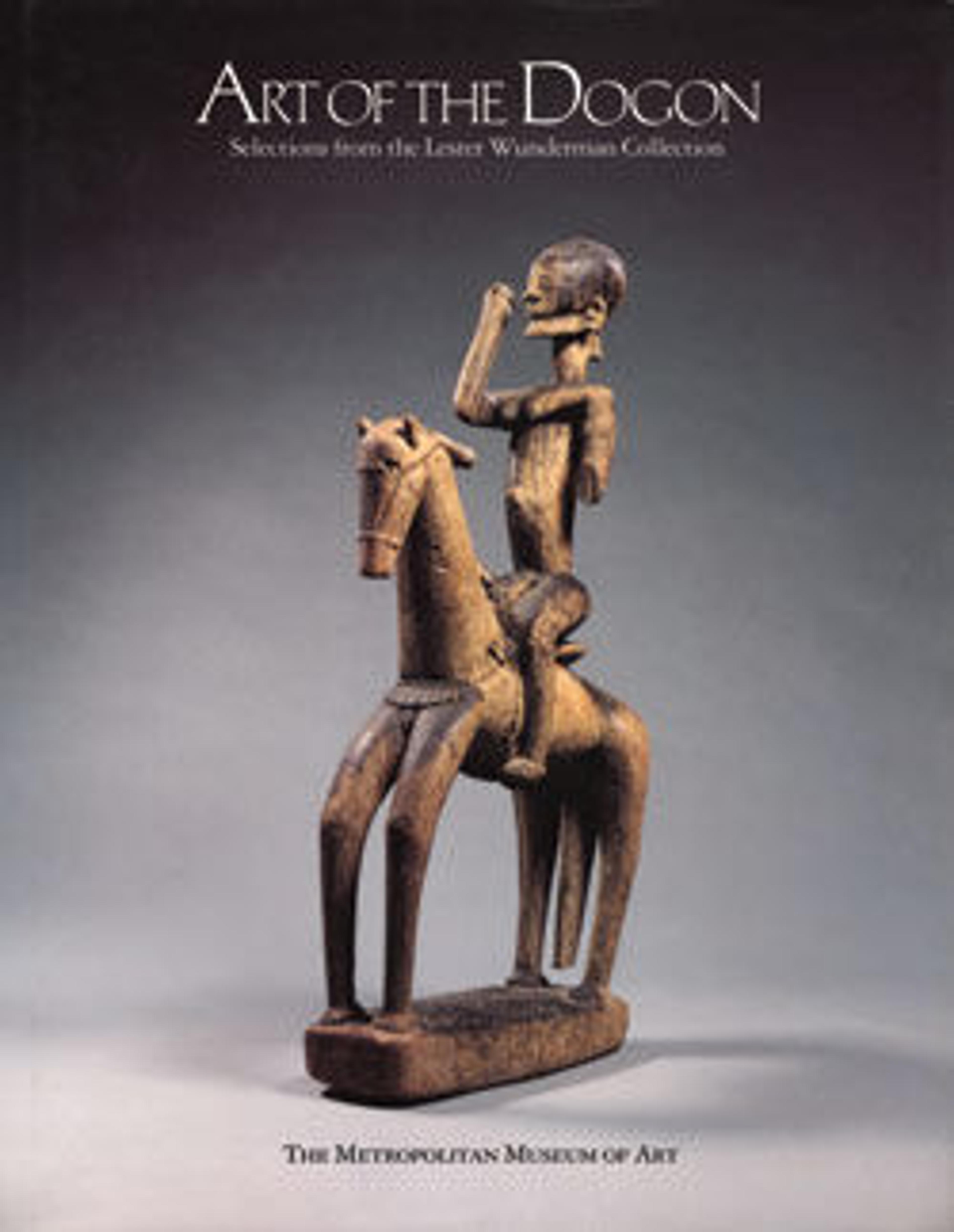Bracelet: Seated Figure (Dyongou Serou)
A European visitor to Dogon country early in the 20th century wrote of the "astonishing perfection" of the ornaments created by local blacksmiths through the lost-wax process.
While copper-alloy ornaments have been created in the Dogon area for almost a millennium, exact dating of these miniatures remains largely speculative, established on the basis of stylistic analysis. Interestingly, there is no evidence of copper mining in the region. The metal may have been obtained through trans-Saharan trade networks that brought copper from Spain, North Africa, and the Sahara to commercial centers of the Sahel and Sudan.
In Dogon thought, copper shares the essence of Nommo, a mythological being that represents order, purity, fertility, and life. These miniature sculptures are ritual objects placed on personal altars in order to localize the spiritual power of the ancestor to whom the altar is dedicated. The fact that copper is associated with Nommo enhances their ability to balance the negative forces controlled through shrines and altars.
While copper-alloy ornaments have been created in the Dogon area for almost a millennium, exact dating of these miniatures remains largely speculative, established on the basis of stylistic analysis. Interestingly, there is no evidence of copper mining in the region. The metal may have been obtained through trans-Saharan trade networks that brought copper from Spain, North Africa, and the Sahara to commercial centers of the Sahel and Sudan.
In Dogon thought, copper shares the essence of Nommo, a mythological being that represents order, purity, fertility, and life. These miniature sculptures are ritual objects placed on personal altars in order to localize the spiritual power of the ancestor to whom the altar is dedicated. The fact that copper is associated with Nommo enhances their ability to balance the negative forces controlled through shrines and altars.
Artwork Details
- Title:Bracelet: Seated Figure (Dyongou Serou)
- Artist:Dogon blacksmith
- Date:19th–20th century
- Geography:Mali
- Culture:Dogon peoples
- Medium:Brass, iron
- Dimensions:H. 1 5/8 x W. 3 5/8 x D. 4 1/4 in. (4.1 x 9.2 x 10.8 cm)
- Classification:Metal-Ornaments
- Credit Line:Gift of Lester Wunderman, 1977
- Object Number:1977.394.1
- Curatorial Department: The Michael C. Rockefeller Wing
More Artwork
Research Resources
The Met provides unparalleled resources for research and welcomes an international community of students and scholars. The Met's Open Access API is where creators and researchers can connect to the The Met collection. Open Access data and public domain images are available for unrestricted commercial and noncommercial use without permission or fee.
To request images under copyright and other restrictions, please use this Image Request form.
Feedback
We continue to research and examine historical and cultural context for objects in The Met collection. If you have comments or questions about this object record, please contact us using the form below. The Museum looks forward to receiving your comments.
